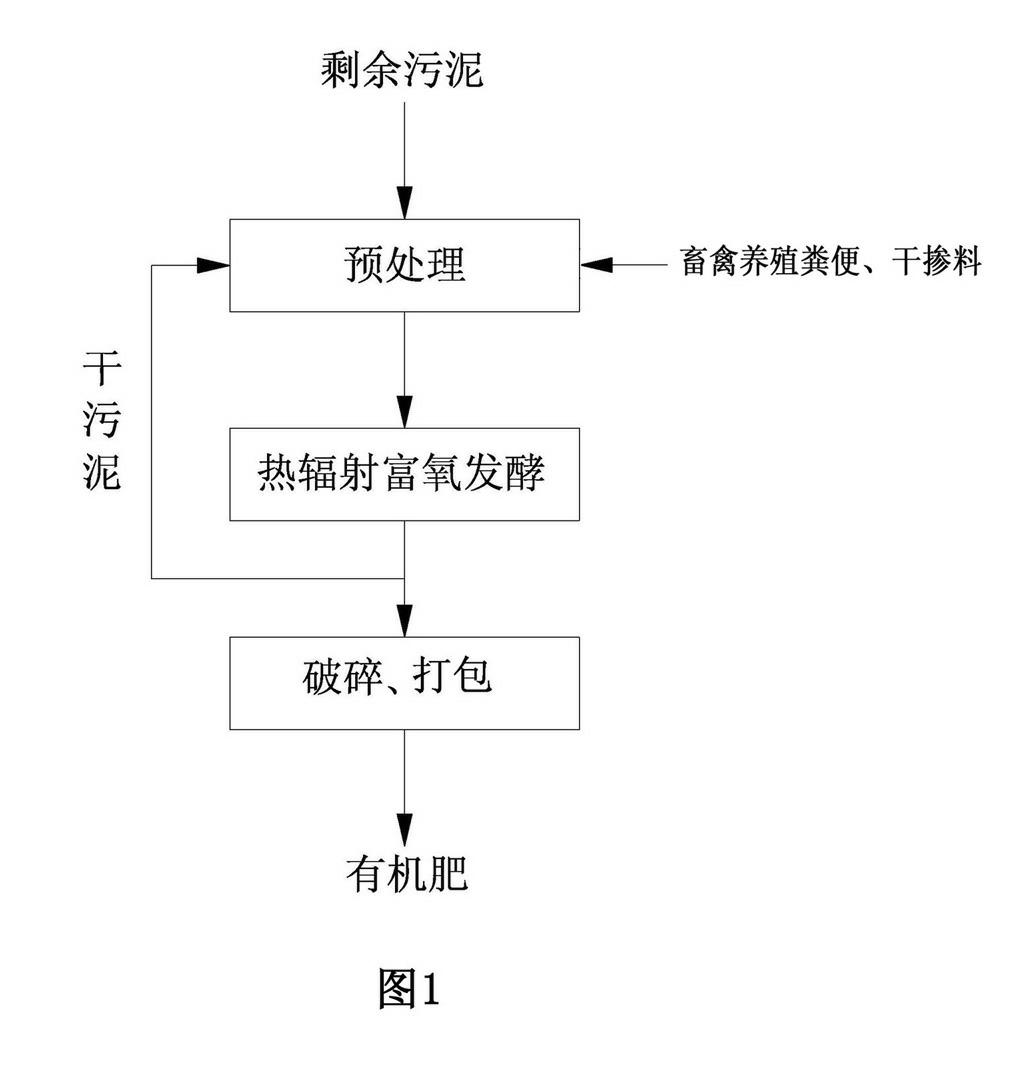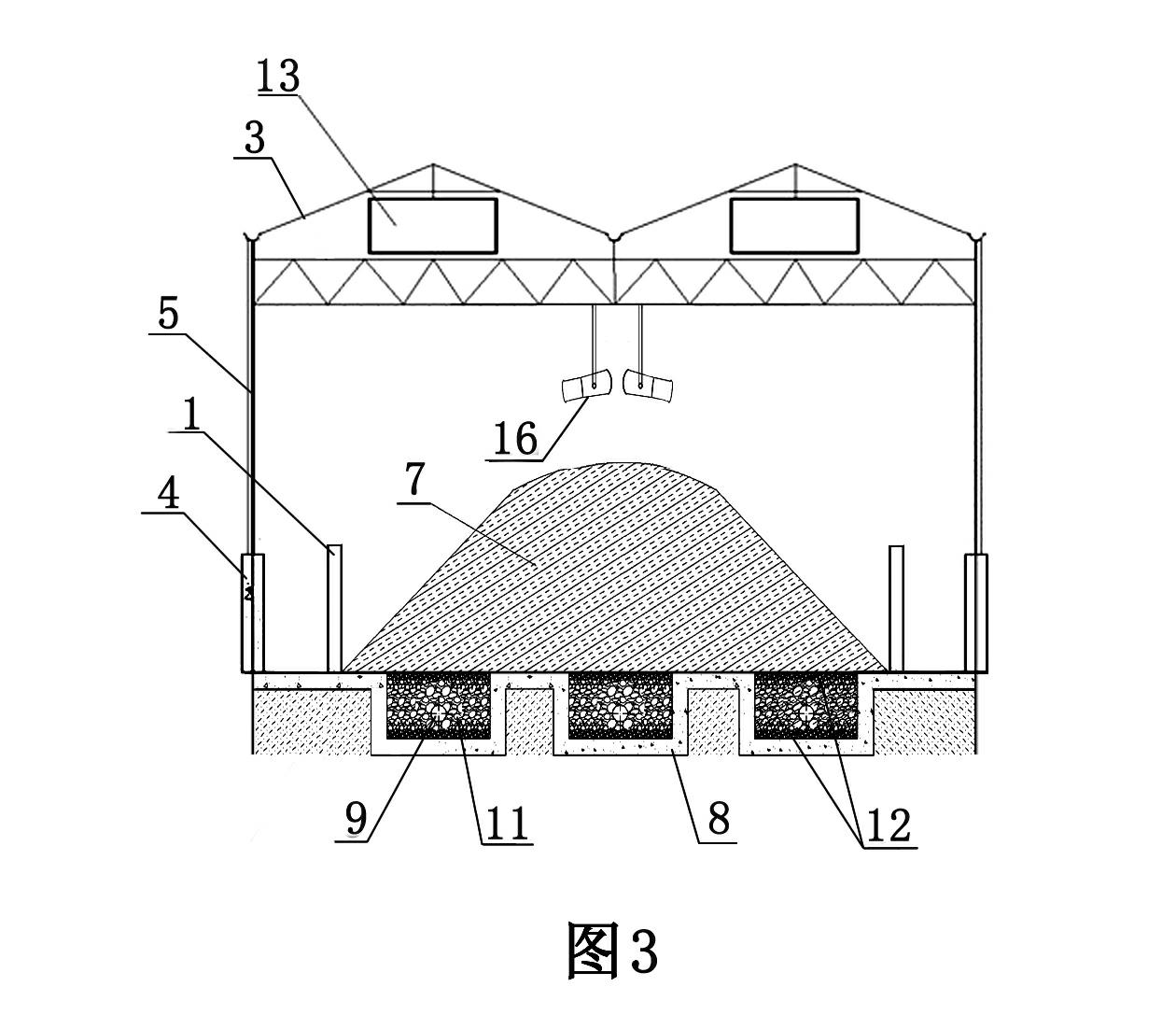Method and system for treating residual sludge by solar energy thermal radiation oxygen-enriched fermentation
A technology of solar thermal radiation and excess sludge, applied in solar thermal power generation, sludge treatment, biological sludge treatment, etc. The effect of shortening fermentation cycle and increasing oxygen content
- Summary
- Abstract
- Description
- Claims
- Application Information
AI Technical Summary
Problems solved by technology
Method used
Image
Examples
Embodiment 1
[0049] Embodiment one, see figure 1As shown, the excess sludge produced by a certain urban sewage treatment plant has a water content of 85-88%, a pH of 7.3, and an organic matter content of more than 65%.
[0050] The solar thermal radiation oxygen-enriched fermentation treatment method for excess sludge in a sewage treatment plant is characterized in that the steps are as follows:
[0051] Step 1, mixing solid-liquid waste, livestock manure, and dry admixture in a mass ratio of 7:1:2;
[0052] Step 2, heat radiation and oxygen-enriched fermentation, transport the mixed material to the fermentation tank 1 in the solar heat radiation area, use solar panels or sunlight panels as an external heat source for fermentation, and fill the fermentation material pile 7 with oxygen The mixed gas with an amount of >40% makes the material heat up quickly for full aerobic fermentation and decomposing. During the fermentation process of the material, the material is always in an oxygen-enr...
Embodiment 2
[0057] Embodiment two, see figure 1 As shown, the water content of the undersieve produced by sorting urban domestic waste is 80 to 85%. This method of solar heat radiation and oxygen-enriched fermentation of residual sludge in sewage treatment plants is as follows:
[0058] Step 1, mixing solid-liquid waste, livestock manure, and dry admixture in a mass ratio of 8:1:1;
[0059] Step 2, thermal radiation and oxygen-enriched fermentation, transport the mixed material to the fermentation tank 1 in the solar thermal radiation area, use solar energy as the external heat source for fermentation temperature rise, and fill the fermentation material pile with oxygen content> 40% The mixed gas makes the material heat up quickly for full aerobic fermentation and decomposing. During the material fermentation process, the material is always in an oxygen-enriched state through power mechanical stirring. The fermentation temperature is 60°C and the fermentation time is 10 days until the moi...
PUM
 Login to View More
Login to View More Abstract
Description
Claims
Application Information
 Login to View More
Login to View More - R&D
- Intellectual Property
- Life Sciences
- Materials
- Tech Scout
- Unparalleled Data Quality
- Higher Quality Content
- 60% Fewer Hallucinations
Browse by: Latest US Patents, China's latest patents, Technical Efficacy Thesaurus, Application Domain, Technology Topic, Popular Technical Reports.
© 2025 PatSnap. All rights reserved.Legal|Privacy policy|Modern Slavery Act Transparency Statement|Sitemap|About US| Contact US: help@patsnap.com



